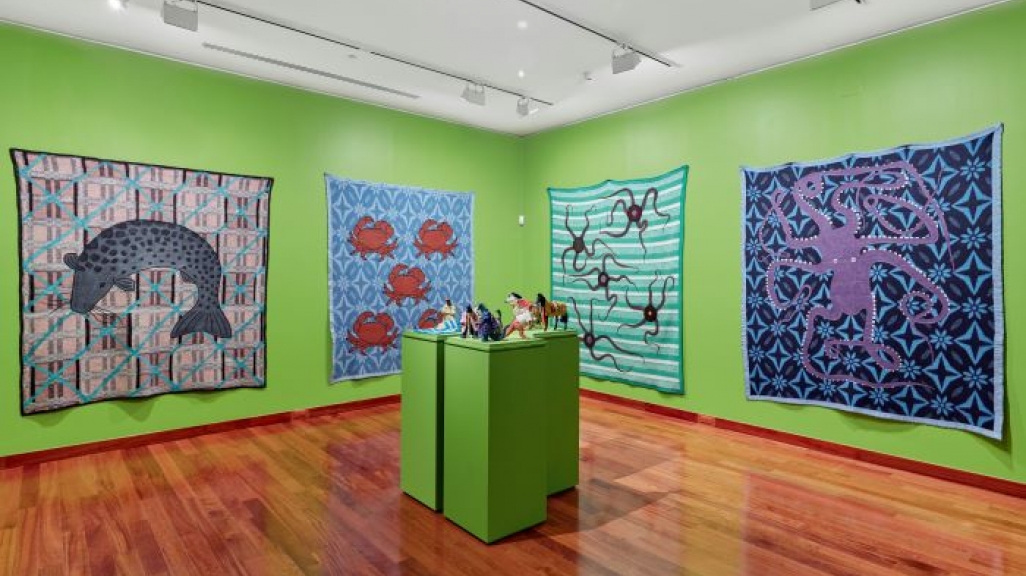The New Yorker on Feliciano Centurión: Abrigo
The New Yorker on Feliciano Centurión: Abrigo
"In Centurión’s first exhibition in the U.S.,...queer aesthetics mingle with folk traditions of South America to poignant, sometimes dramatic effect," writes Johanna Fateman for Goings on About Town.
This Paraguayan artist, who was based in Buenos Aires, left behind a substantial and stunning body of work in 1996, when he died, of AIDS-related complications, at the age of thirty-four. His paintings on fabric and pillows (among other textiles) utilize sentimentality—in registers both earnest and edgy—with nuanced intensity. In Centurión’s first exhibition in the U.S., curated by Gabriel Pérez-Barreiro, queer aesthetics mingle with folk traditions of South America to poignant, sometimes dramatic effect. The show opens with sea-creature-themed compositions, from the early nineteen-nineties, that make ingenious use of the existing geometries of bedding, a material whose fraught, domestic allusions Centurión played with throughout his career. In the arresting “Cordero Sacrificado” (“Sacrificed Lamb”), from 1996, a dark blanket flecked with yellow paint provides a cosmic backdrop for the title’s ritual scene. Many of the smaller works here feature hand-stitched texts that range in tone from aphoristic and spiritual to observational, including the carefully embroidered, heartrendingly simple phrase “Mis glóbulos rojos aumentan” (“My red-blood-cell count increases”)...









